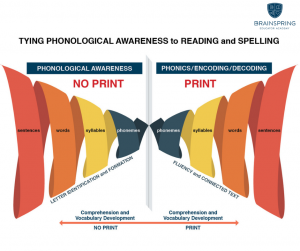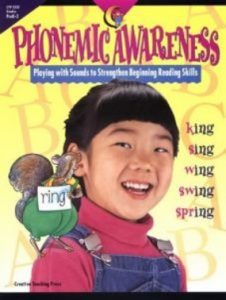How Phonological Awareness Enables Reading & Spelling
Posted by Angelina Spiteri-Bender on 9th Jan 2019
How Phonological Awareness Enables Reading & Spelling
The starting point to reading and spelling is recognizing sound. Before we expose our students to print, we want to ensure they have strong phonological awareness skills. Students must figure out how the words they hear and say connect to letters on the page. Many students have missed the acquisition of phonological awareness skills early on and therefore struggle significantly in reading. The good news is, these skills can be explicitly taught to individuals of all ages.
Imagine you have a student who goes to read a word and is unsure of what the individual letter sounds are. They may even be unsure of the letter names associated with those sounds. How then can this student blend those sounds together to form the word? String those words into sentences? What does this mean for spelling? If this is the case, stepping back and teaching phonological awareness skills is critical to success in reading, regardless of age.
Why Phonological Awareness is Important for Reading & Spelling
To help us better visualize the process of how phonological awareness ties into phonics, take a look at the diagram above. Imagine this as a ribbon, with each curl building into the next. On the left-hand side, we start teaching phonological awareness skills. We start by working with larger concepts such as sentences, then break down those sentences into words. Words break down into syllables and lastly syllables into phonemes. Each “curl” in the ribbon is taught individually before moving on to the next.
While working on strengthening our recognition of these building blocks of language, we simultaneously begin tying in alphabet skills such as letter recognition and letter formation. In preparation for phonics, students first need to automatically recognize the letter names to be able to later attach the sound to the letter. Also, we are not asking our students to read material independently while working on phonological awareness skills. At this time we can enhance comprehension and vocabulary development by reading to students and engaging them in active listening activities.
The Next Steps: Phonics, Decoding, and Encoding
Once students strengthen their phonemic awareness skills (can orally blend and segment individual sounds in words) they can then move on to phonics instruction. This means our students are now ready to attach the sound to the symbol (letter) that they previously learned while practicing phonological awareness skills.
On the right-hand side of the diagram, students begin by associating phonemes to letter names. Phonemes are then built into syllables, syllables into words and words into sentences. Throughout phonics instruction, students will be exposed to print and will begin to strengthen their reading fluency. Again, each “curl” in the ribbon is taught before moving on to the next.
When beginning to read, students should start out with controlled reading material. This includes a combination of only the sounds that have been previously and explicitly introduced. Controlled readers help students increase their confidence in reading as they will only be practicing skills they have been introduced to. As students become stronger readers, they will apply these phonics skills to their everyday reading.
Activities to Develop Phonological Awareness
Here are some engaging activities and exercises that can enhance phonological awareness skills:
- Rhyming Games: You can play simple games like "I Spy" with rhyming words or read rhyming books and emphasize the rhyming words.
- Syllable Counting: Clap your hands, tap a drum, or use fingers to count the syllables in words. Start with simple words and gradually move to more complex ones.
- Phoneme Segmentation: You can use counters, blocks, or fingers to represent each sound. This helps learners understand how sounds combine to form words.
- Sound Matching: You can create a set of picture cards and ask the child to find pairs of words that start with the same sound, like "ball" and "bat," or end with the same sound, like "cat" and "hat."
- Blending Sounds: Children can practice combining individual sounds to form words. Say the sounds slowly, like /s/ /a/ /t/, and have the child blend them together to say "sat."
Warning Signs of a Weakness in Phonological Awareness
Regardless of age, students may have to rewind and fine-tune phonological awareness skills.
Below are the warning signs of weakness in phonological awareness:
- Poor spelling
- Inaccurate decoding of new words
- Mispronunciation of words
- Difficulty remembering or recalling new words
Book Recommendations
Need some ideas for teaching phonological awareness?
Below are some books we recommend while teaching and/or remediating these skills:
These books are available for purchase on our website. Click here!
Enjoy!
Written by Angelina Spiteri-Bender
Angelina is an Educational Consultant and Instructor with Brainspring Educator Academy.




